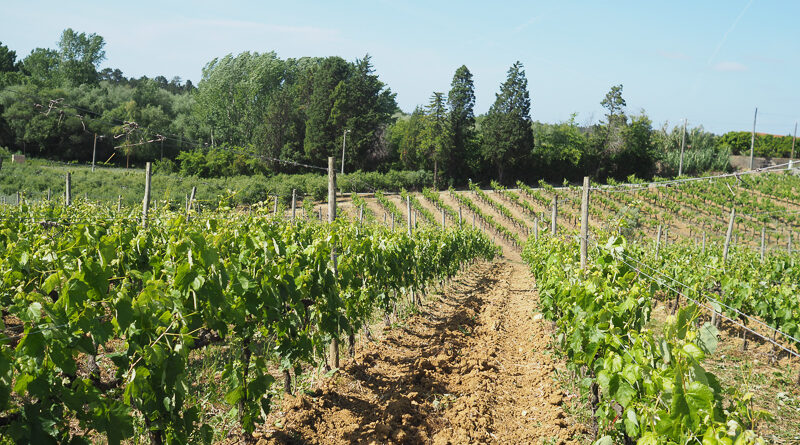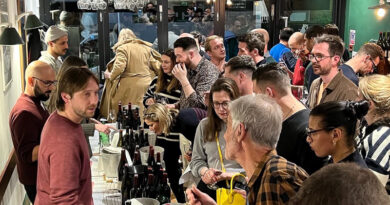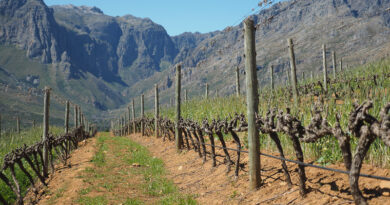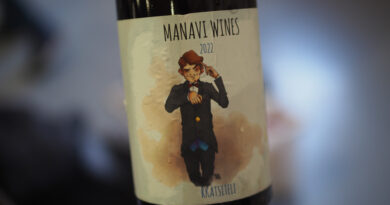Exploring Bairrada, Portugal, on the Baga trail (1) Vadio
Luís Patrão was for a long time the wine maker at large Alentejo winery Esporão, a job he stayed in until 2016. But his own project, and most of his focus, is now Vadio, a winery in Bairrada (he also consults for Herdade de Coelheiros in the Alentejo).
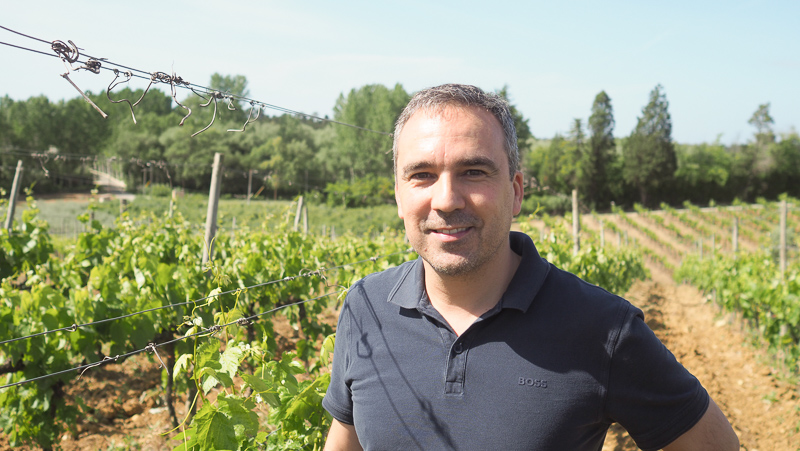
‘My family was a typical Barriada family, says Luís. ‘My father ran a shop where he supplied growers with chemicals. He had half a hectare of vines, making the wine at home.’ For a long time the tradition in the region was for the homes all to have a small winery, and they sold their excess wine – beyond the family’s needs – to one of the negociants. Each village would have one person who tasted the wines, collected them, and supplied them to the negociants. This tradition carried on until the 1950s, when the coops began. Then they sold their grapes to the coop, who made the wine.
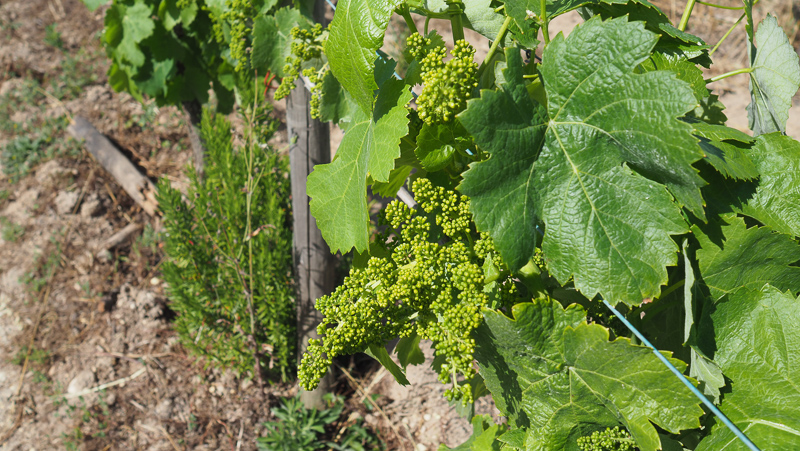
In 2005 Luís decided he’d like to start Vadio. His father was retiring, so he started the project with his half hectare of vines. He’s now grown this to 9 hectares. But rather than keep working with old vines, in 2007 he decided to replant everything. ‘I was moving to organics at Esporão, but I was concerned with the weather for organics here. It’s very difficult in old vineyards. To do 9 hectares well in organics is a big challenge.’
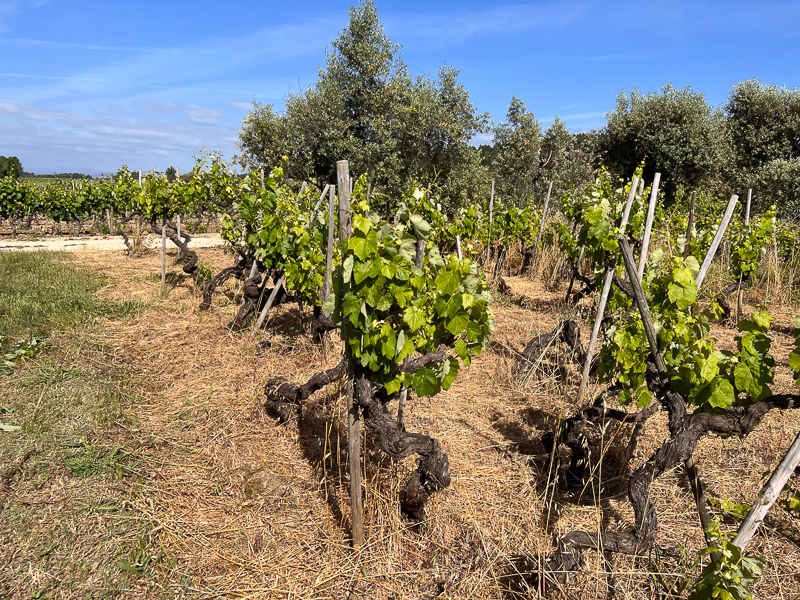
He’s kept a few of the old vines to provide genetic material for massal selection, but the rest of the vineyards have been replanted so that it’s possible to get in with tractors and farm organically without requiring many hours of expensive (and hard to find) hand work.
Our first vineyard stop was near the village of Torres, where there’s an important valley: Vale do Pedro. It has 160 hectares of vines, and the old map shows 300 different blocks, so each would be around half a hectare. His vineyard here is called Rexarte, and has a mix of soils. It’s at the edge of the valley where the soils are sandier, and here he’s planted Bical and Cercial. Then in the clay/limestone soils more typical of the region, Baga is planted (the best soils for Baga are clay/limestone, but the sandy soils really suit the whites). In the past the vineyard locations were chosen because it was the sites where they couldn’t grow other crops or plant forests: the poorer soils.
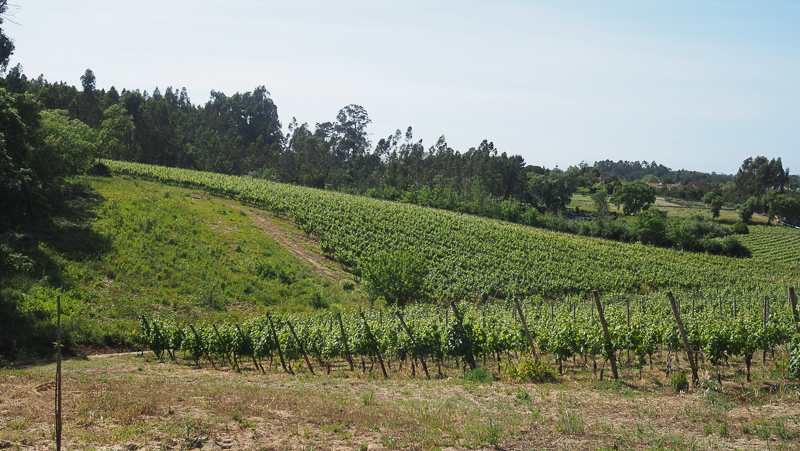
This is 30 km from the ocean, so there are frequent fogs. It’s one reason Baga is so widely planted here, because it is quite resistant to mildew. The whites are cane pruned, but Baga is grown on a cordon to reduce yields and control vigour.
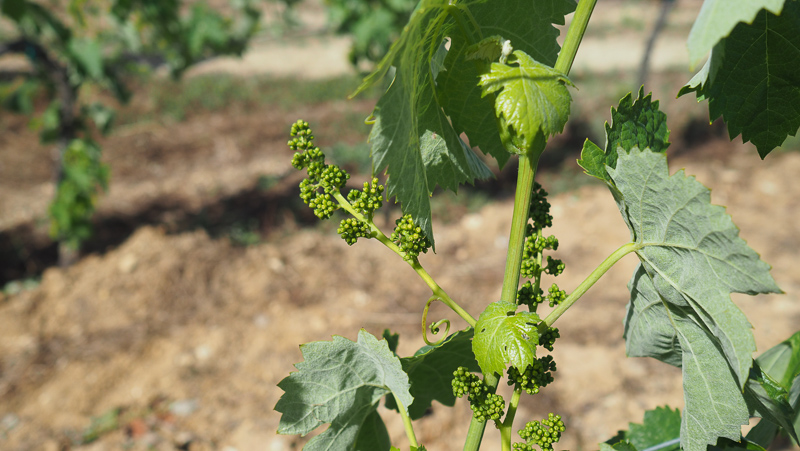
Our second visit was to Cancelinha, and here Luís has kept an old block to save genetic material. But it takes as long to work this block of old vines as it does the other 9 hectares! ‘In organics we can’t react, says Luís, ‘but instead we have to anticipate problems. If we had 9 hectares like this, it would not be possible.’
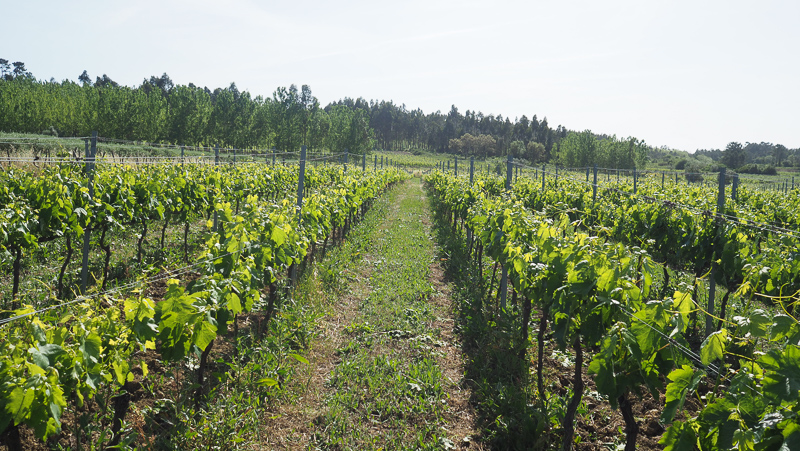
We began tasting by looking at sparkling wines, something that Vadio has made quite a reputation for. ‘Since we are in Bairrada we have to produce sparkling wines: it is part of the story,’ says Luís
Vadio Sparkling Rosé 2020 Bairrada, Portugal
100% Baga from vineyards in the centre of the valley. These grapes are purchased. Whole bunch pressed, then settled, then fermented in barrel. Usually bottle in March with a dosage of 6 g/litre, and this is 20-22 g sugar so slightly lower pressure. Pale pink in colour this is really direct and fruity with nice cherry and lime notes, showing delicacy and purity. Fruit driven and appealing. 90/100
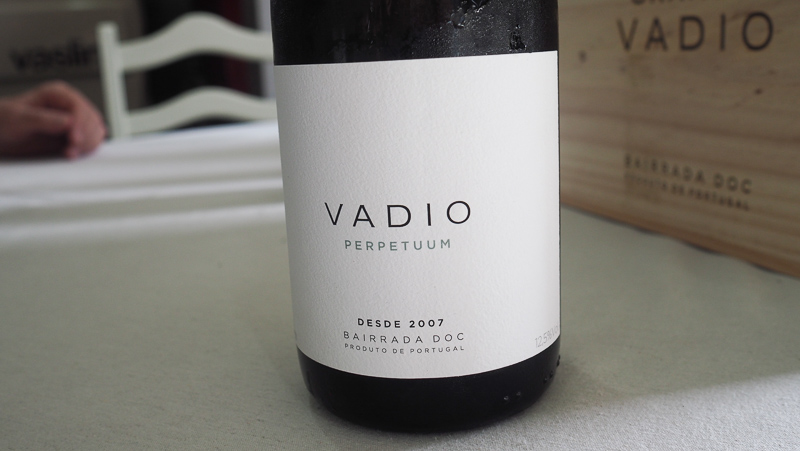
Vadio Perpetuum NV Bairrada, Portugal
12.5% alcohol. This is from a perpetual blend or solera, which started in 2007, and this is the 2022 disgorgement. A blend of Bical, Cercial and Baga. Complex and intense with some nutty, spicy hints and lemony characters, with some almond and pear, too, and even a touch of baked apple. Lively acidity here, too. Very interesting. 93/100
We then try a base wine. The solera gets around 30% of new wine each year. They have 20 000 litres of this. It’s rich and appley with some pear and nut on the nose. This is lively with crisp lemony acidity, but the oxidative notes in this base wine seem to disappear during the secondary fermentation. Lovely and intriguing.
Then we try another part of the solera. ‘I love this wine but I cannot use a lot of it,’ says Luis. It has tangy flor-like characters on the nose with some appley, oxidative characters and a touch of cheese. So distinctive, with high acidity, and some volatile acidity. One of the challenges with perpetual soleras is that the VA can keep growing.
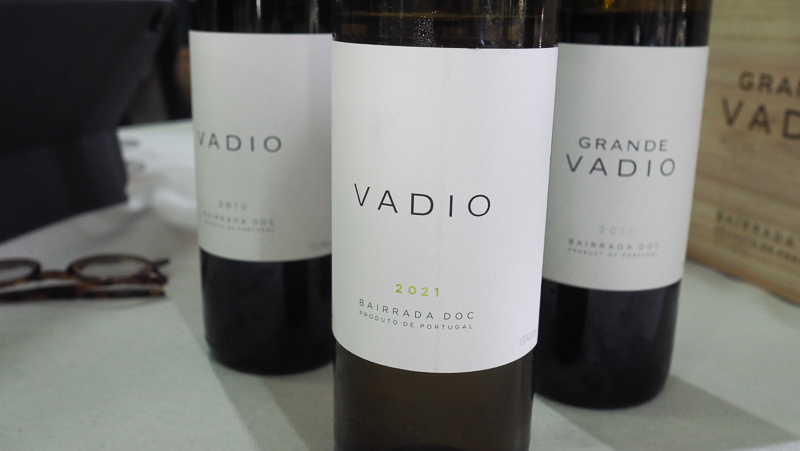
Vadio Branco 2021 Bairrada, Portugal
Bical and Cercial. Most of this comes from the sandy soils in the Rexarte vineyard, plus some from growers on clay/limestone soils. Lovely fruit here: pear, white peach and some mandarin, with nice flesh and a slightly chalky edge. Pretty, with freshness and good acidity. Has a nice juicy finish: so supple and pleasant, but potential for a bit of ageing? 91/100
Vadio Tinto 2019 Bairrada, Portugal
50% whole bunch. Still buy in some grapes for this (in 2019 this was 50%, but they are reducing this every year). Aged in barrel for at least two years. This is fresh and purposeful with vivid cherry and blackberry fruit, and nice brightness. There’s a chalky, fine grained mineral edge to the fruit, which is backed up with good acidity. Such a fresh wine with lovely fruit and plenty of structure. Combines flesh and bones well. 94/100
Grande Vadio 2016 Bairrada, Portugal
This comes from three different plots in owned vineyards, and just from slopes. It spends just one year in barrel, in order to keep the precision and fruit purity. Structured and dense with pure cherry and berry fruit as well as some gravelly, spicy savouriness. This has lovely fruit, lovely structure and nice purity. Great structure and intensity here, with lots of potential for development. 95/100
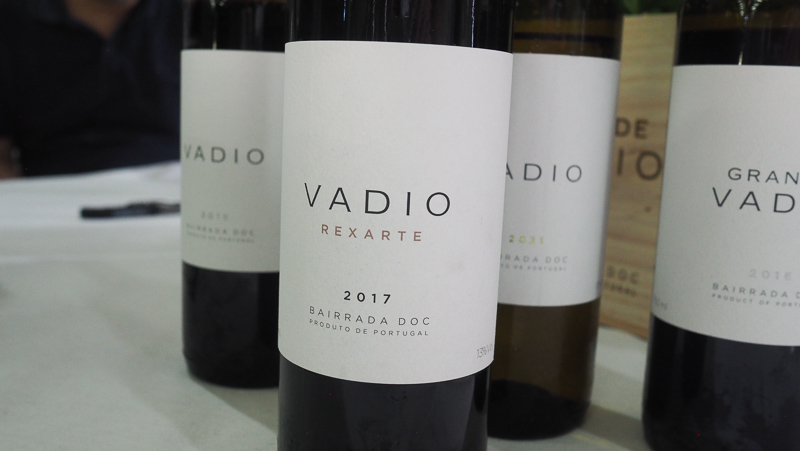
Vadio Rexarte 2017 Bairrada, Portugal
13% alcohol. 50% whole bunch, 1200 kg from this block, which faces north. Insane concentration and structure here with dense cherries and plums, showing firm but refined tannins. Lovely intensity with fresh herbal hints and some tar and stewed plum, then a hint of mint, too. So vivid and incisive with real power. Very fine and expressive. 96/100
They hold back 10% each year for library release at age 10. This is a mini-vertical (current release is 2012).
Vadio Tinto 2013 Bairrada, Portugal
This was a tricky vintage. Supple, with some green herbal hints as well as juicy cherry and berry fruit. There’s also some spicy framing. Has some notes of earth and iodine, with an appealing acid line, and fine-grained tannins. Nice detail here. 93/100
Vadio Tinto 2012 Bairrada, Portugal
13% alcohol. Fresh, fine and taut with lovely precision to the black cherries and plums, plus some spice and nice structure. Has freshness and plenty of fruit, with a chalky character and good structure. Lovely focus and grip, and some notes of iodine and earth in the background. 95/100
Vadio Tinto 2011 Bairrada, Portugal
A warm vintage, and you can see this in the wine. Warm and spicy with dried herbs, tar and earth. Has some green hints under the lush berry fruits, with a warm, spicy depth. Pleasant evolution here, showing nice depth and also a hint of eucalyptus on the finish. 93/100
See also: an older report from 2014

